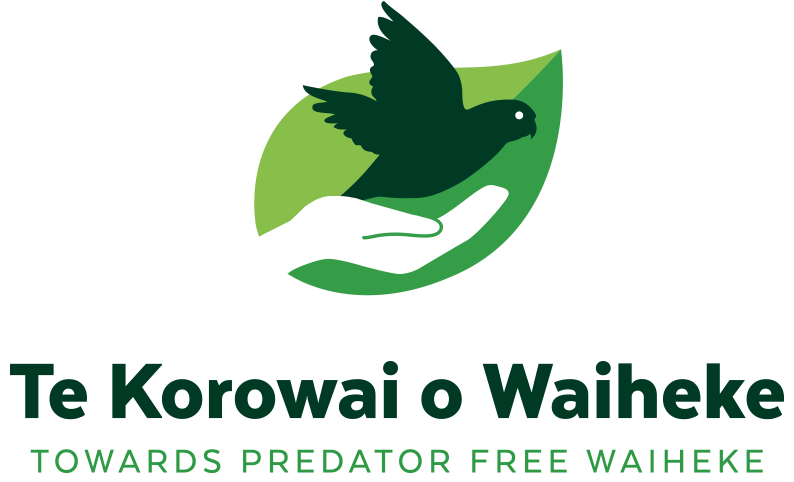The biggest insect in the world — Written by Te Korowai o Waiheke Team Member
Nightfall on Ōtata and the undergrowth murmurs with nocturnal life. A large, conspicuous piece of bamboo hangs from a thick kohekohe on the summit. Long scratching sounds come from within the tunnel as two pronged feet reach around the edge of the opening. They grasp forward and are followed by long, umber legs lined with hooks. There is the subtle indentation of an ear on each side. Her face peaks around the corner of the bamboo, feeling gently at the trunk of the tree as she drags her plated body slowly through the gap. Her face is bigger than my thumb nail, with beady eyes like drops of the night sky. She continues down the trunk of the tree, each step slow and calculated, she is on the hunt for her next meal.
Aotearoa is full of strange looking creatures, from the very small to the very large. Some like to give you a fright by turning up in your gumboots, some will give you a nasty nip if you put your fingers too close. Though there is an insect that takes my breath away, every time I’m privileged enough to see one, and that is the wētāpunga. The Little Barrier giant wētā is the biggest insect in the world, some growing heavier than a mouse. They are one of the most remarkable and elusive creatures to call our offshore island sanctuaries home. Hauturu, Tiritiri Matangi, the Bay of Islands and the Noises island group are all home to these giant wētā due to an incredibly successful breeding program run by Auckland Zoo. A quiet night walk on these motu now may mean you are lucky enough to see one up close.
As she reaches the ground floor, the green foliage of karamu and karaka surrounds her, so dinner is served without any need for a chase. wētāpunga are gentle and passive creatures who feed on the large, fresh leaves of our native trees. Though she is cladded in armour and wields a fierce set of mandibles, it is all a matter of self defense and chomping on our native rakau. These marvelous insects have been around longer than our iconic ‘dinosaurs’ the tuatara, so I can’t help but feel pretty special every time I get to see one in its natural habitat.
- Written and captured by Field Team Technician Charlie Thomas



